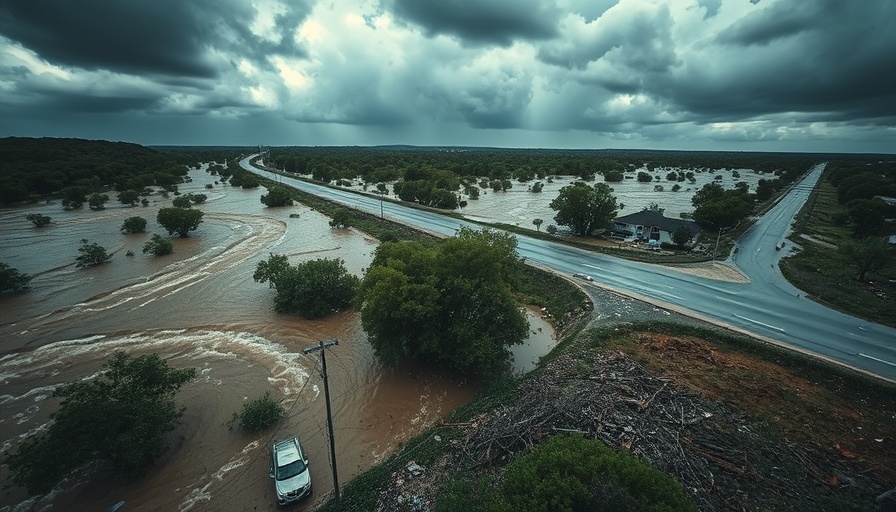
Devastating Floods Strike Texas Hill Country: A Call for Action
The recent catastrophic flooding in Texas Hill Country has tragically claimed over 32 lives, with dozens more still missing as of Saturday morning. The deluge began with a warning issued by the National Weather Service (NWS) predicting significant rainfall, yet the region was overwhelmed by a staggering amount of rain—up to 12 inches—falling within hours. Many residents were caught off guard, raising vital questions about emergency responses and the accuracy of weather predictions.
The Rainfall and Response: A Timeline of Events
On Thursday, July 3rd, the NWS issued a flood watch, yet by Friday morning, the situation had escalated into a deadly tempest. Despite forecasts suggesting 6 inches of rain, the reality proved drastically different: the Guadalupe River gauge in Hunt recorded a jaw-dropping 22-foot rise in just two hours. Local officials, including Kerr County Judge Rob Kelly, claimed they had no reason to anticipate such catastrophic flooding, expressing disbelief at the sudden intensity of the storm.
Warnings That Went Unheeded
However, multiple flash flood warnings were issued as the rain fell—one as early as 1:14 a.m. on July 4th, just hours before disaster struck. These warnings included alerts distributed through emergency response channels to notify officials and residents alike. Yet many in the area did not evacuate, leading some meteorologists to argue that local authorities should have acted more decisively in alerting and preparing the public.
Historical Context: Flooding in Central Texas
Central Texas is no stranger to severe storms and flooding. The geography and climate of the region often conspire to produce sudden and violent weather patterns. This historical context amplifies the urgency for enhanced communication between weather services and local emergency management to ensure that warnings are not only issued but effectively conveyed to at-risk communities.
Importance of Preparedness and Community Action
The heartbreaking events of this July illustrate the critical need for improved preparedness infrastructure in areas susceptible to flooding. Community leaders, emergency services, and residents must collaborate in developing actionable plans for swift evacuations and emergency response. Increased awareness and proactive measures can alleviate the human toll of such calamities and ensure that the community is safer and more resilient in the future.
Technological Advances in Alert Systems
The fault lines in the response during this flood come at a time when technology is capable of relaying early warnings more effectively than ever before. Wireless Emergency Alerts and other notifications are invaluable, but what happens when these systems fail to activate timely? This disaster underscores the importance of reviewing and potentially reforming protocols to maximize their efficacy during critical emergencies.
Looking Forward: Changes Needed in Flood Response Framework
As Texas grapples with the aftermath of this tragedy, decisive changes are essential. Stakeholders must draw lessons from this flood, assessing the communications between meteorologists, emergency management, and local organizations. Increased education about flood risks could empower citizens to take precautions. Effective community preparedness can minimize the devastation from unavoidable severe weather in the future.
Conclusion: A Call to Action for Texas Residents
The events in Texas Hill Country serve as a critical reminder for both individuals and communities about the need for vigilance and preparation in the face of natural disasters. As local leaders, state officials, and residents come together to address the shortcomings in emergency preparedness and response, they must prioritize swift communications and safety protocols to protect lives and homes. It is imperative that Texans remain informed and engaged, especially in high-risk areas.
 Add Element
Add Element  Add Row
Add Row 



 Add Row
Add Row  Add
Add 


Write A Comment